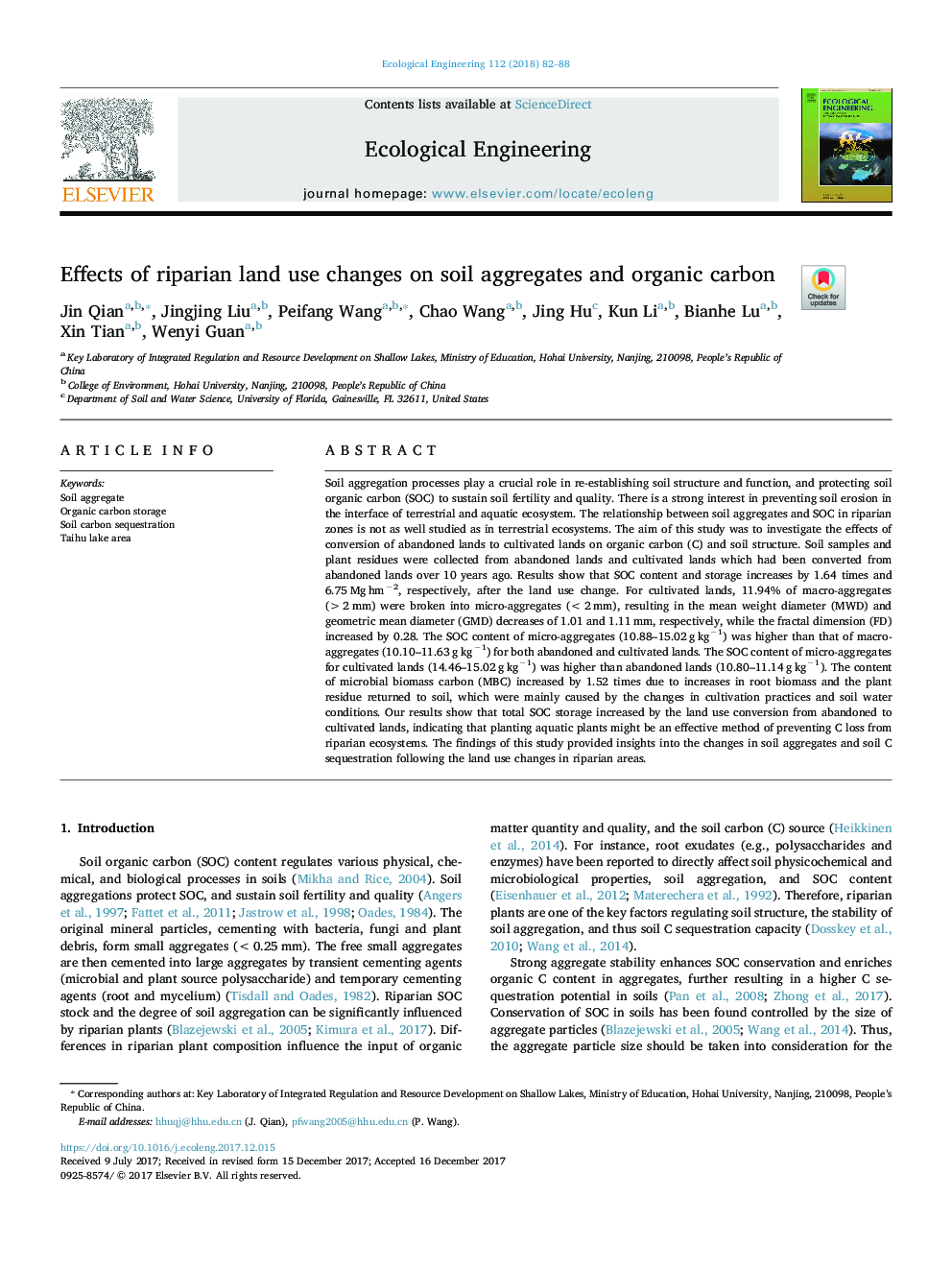| Article ID | Journal | Published Year | Pages | File Type |
|---|---|---|---|---|
| 8848061 | Ecological Engineering | 2018 | 7 Pages |
Abstract
Soil aggregation processes play a crucial role in re-establishing soil structure and function, and protecting soil organic carbon (SOC) to sustain soil fertility and quality. There is a strong interest in preventing soil erosion in the interface of terrestrial and aquatic ecosystem. The relationship between soil aggregates and SOC in riparian zones is not as well studied as in terrestrial ecosystems. The aim of this study was to investigate the effects of conversion of abandoned lands to cultivated lands on organic carbon (C) and soil structure. Soil samples and plant residues were collected from abandoned lands and cultivated lands which had been converted from abandoned lands over 10 years ago. Results show that SOC content and storage increases by 1.64 times and 6.75â¯Mgâ¯hmâ2, respectively, after the land use change. For cultivated lands, 11.94% of macro-aggregates (>2â¯mm) were broken into micro-aggregates (<2â¯mm), resulting in the mean weight diameter (MWD) and geometric mean diameter (GMD) decreases of 1.01 and 1.11â¯mm, respectively, while the fractal dimension (FD) increased by 0.28. The SOC content of micro-aggregates (10.88-15.02â¯gâ¯kgâ1) was higher than that of macro-aggregates (10.10-11.63â¯gâ¯kgâ1) for both abandoned and cultivated lands. The SOC content of micro-aggregates for cultivated lands (14.46-15.02â¯gâ¯kgâ1) was higher than abandoned lands (10.80-11.14â¯gâ¯kgâ1). The content of microbial biomass carbon (MBC) increased by 1.52 times due to increases in root biomass and the plant residue returned to soil, which were mainly caused by the changes in cultivation practices and soil water conditions. Our results show that total SOC storage increased by the land use conversion from abandoned to cultivated lands, indicating that planting aquatic plants might be an effective method of preventing C loss from riparian ecosystems. The findings of this study provided insights into the changes in soil aggregates and soil C sequestration following the land use changes in riparian areas.
Related Topics
Life Sciences
Agricultural and Biological Sciences
Ecology, Evolution, Behavior and Systematics
Authors
Jin Qian, Jingjing Liu, Peifang Wang, Chao Wang, Jing Hu, Kun Li, Bianhe Lu, Xin Tian, Wenyi Guan,
